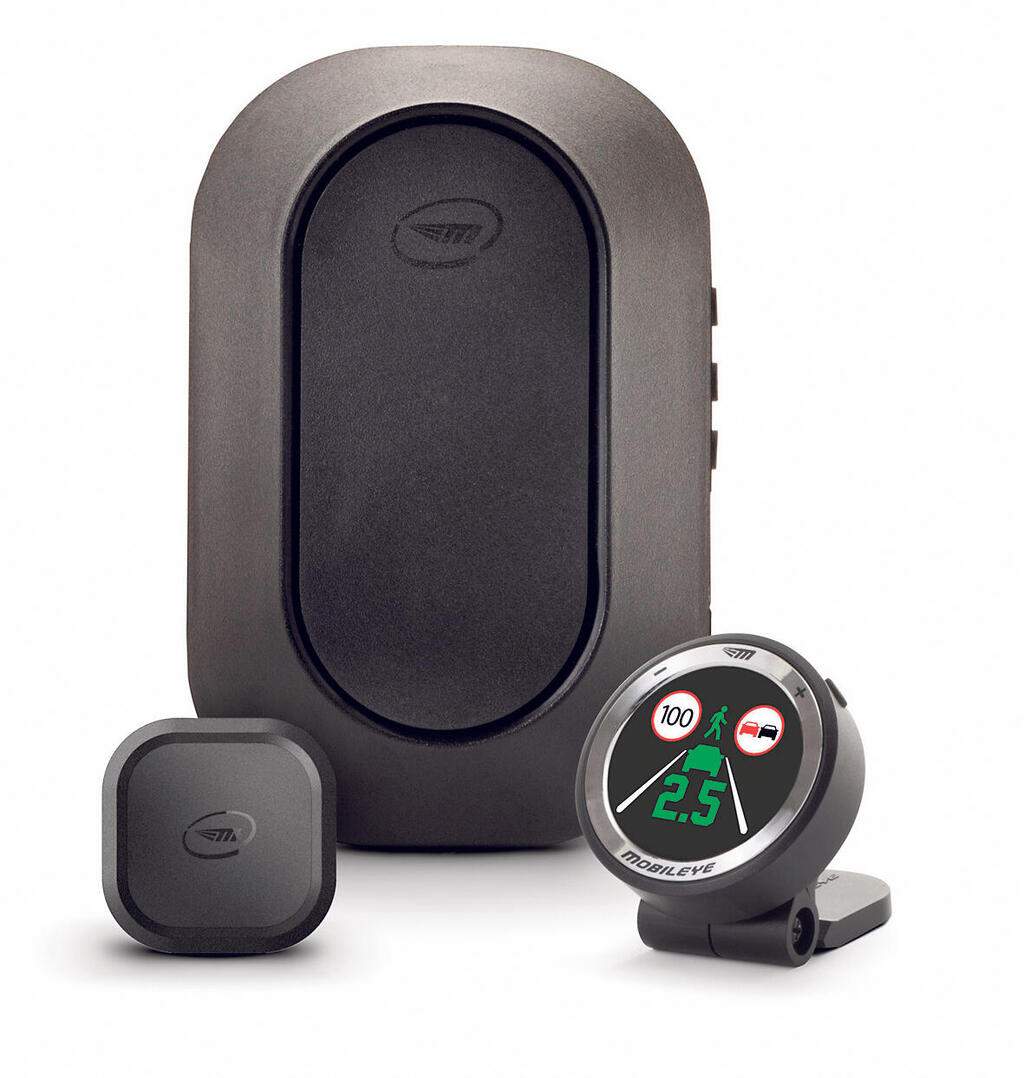
Mobileye still searching for light at the end of the tunnel despite layoffs
The autonomous vehicle company laid off 130 people after closing its aftermarket division
Israeli autonomous vehicle company Mobileye is closing the aftermarket division and will lay off 130 employees as part of the move, of which 90 are in Israel. This is less than 5% of Mobileye's total workforce of approximately 3,700 employees, 3,400 of whom are in Israel.
The aftermarket division is responsible for the production of the legendary warning systems for drivers, which Mobileye was the first to bring to the world and were its original development even before the vision of the autonomous vehicle became tangible. These systems are known to most drivers in Israel and around the world, and over the years have even become particularly unpopular because of the beeping they make when deviating from a lane or approaching another vehicle too quickly.
These systems were considered revolutionary a decade ago, but since then they have become a kind of basic product developed over time by the car manufacturers themselves, so that the need to install them after the completion of the car production by an external supplier has become unnecessary. After about a decade of sales, Mobileye still registers revenues of about $40 million a year from this product, but according to the company it no longer contributes to its profitability.
In fact, what happened to Mobileye is reminiscent of the Disk-on-Key developed by Dov Moran's M-Systems - the great success of the product and its widespread adoption resulted in it becoming a commodity, an easy-to-copy product that is not profitable. Over the years, Mobileye has marketed the system as one that helps prevent road accidents, and in this context the Israeli Ministry of Transportation even decided to encourage the installation of these systems and provide a discount on the license fee for vehicles in which the system was installed.
However, as time passed, tests that were done found no correlation between the installation of Mobileye's alert system and the prevention of traffic accidents. Today, most of the new vehicles imported to Israel come with built-in systems such as AWACS and MOVON.
"This was a very difficult decision," said Amnon Shashua, President and CEO of Mobileye yesterday, when the decision to close the operation was announced, "“The IMS division, formerly known as Aftermarket, was an early driver of Mobileye’s leadership, demonstrating that road safety can be effectively delivered at a low cost, a key catalyst for increasing adoption of ADAS technologies on new vehicles. Unfortunately, the success of Mobileye’s built-in ADAS solutions has diminished the opportunities for retrofit solutions to the point where it is no longer viable to continue the retrofit solutions activity.”
Mobileye insists that the current move to close operations and lay off employees is not related to the sharp decline in its core business of driver assistance systems. The company even stated on Monday that it continues to recruit employees for its other departments. In response to the question of why, then, it did not choose to move the employees of the aftermarket division to other departments in Mobileye that apparently need employees, the company said that these are mainly logistics and support employees whom it does not need now. Mobileye stopped investing resources in the development and marketing of these systems in recent years, but according to estimates in Israel alone there are still about 300,000 such active systems.
It seems that Mobileye's investors nevertheless interpreted the move as the first sign of a cut in operating costs and the stock registered an increase of about 3.5% at the beginning of trading on Wall Street. However, it is still far from recovering from the blow it landed on its shareholders in late December when it announced an expected drop in revenue in the first quarter of 2024 due to the accumulation of inventory by its customers.
If in the fourth quarter the revenues amounted to $637 million and reflected a 13% increase compared to the corresponding quarter, then in the current quarter it is expected to report a third of these revenues - slightly more than $200 million. As a result of the sharp decrease in revenues, profitability is also expected to be affected with a projected operating loss of $378-468 million in 2024 on revenues of $1.83-1.96 billion. Mobileye ended 2023 with revenues of $2.1 billion, an 11% growth compared to 2022. Since the release of the profit warning that dropped Mobileye's stock by 50%, the stock has not recovered and is currently trading at a price that reflects a company value of $23 billion. Even Shashua’s traditional participation in the big annual electronics show CES in Las Vegas at the beginning of January and the announcement made there of an agreement with a major car manufacturer, failed to lift Mobileye's stock from the slump.
The weakness in Mobileye is a concern for parent company Intel, which still owns 88% of the shares. In the meantime, also because of its own troubles, but also because of the collapse of Mobileye's stock, Intel is suffering from a negative return of 11% since the beginning of the year and this against the increases in all the leading indices on Wall Street.
Most of Mobileye's sales today come from ADAS systems that enable very high levels of automation in driving. In these systems, it enjoys a high market share of about 70% among western vehicle manufacturers (almost all major manufacturers except Mercedes and Toyota) and a significantly lower market share of about 40% in China.
Most of Mobileye's sales are made through OEM agreements with auto parts manufacturers that work directly with Tier 1 car manufacturers. According to Mobileye, the significant deterioration in its performance that is expected throughout 2024 and especially in the first half of the year, is not due to a significant change in its market, but only to a failure to receive real time information on the accumulation of high stocks of its products in the partner companies. Accumulation created after increased stocking as a result of fluctuations experienced by many manufacturers during the pandemic period and against which they tried to protect themselves.
The company insists that it is not losing market share or new contracts to its strong rivals, led by Nvidia and Qualcomm, which have established themselves in this market, and that it will grow again in the coming years. With the publication of the financial reports for 2023, Mobileye updated that its order backlog stands at $7.4 billion as long as it delivers the 61 million units of driver assistance systems according to the long-term contracts it has signed. For comparison, this is the amount of systems it has sold in the last two years. "Our fourth quarter performance was very strong across the board, but is understandably overshadowed by the inventory build-up at our customers which will impact our growth in 2024," Shashua said.
In addition to waiting for the stocks to be emptied, major questions are floating about the future of Mobileye's growth, including the pace of its penetration into the Chinese market, which is the fastest growing and least saturated market in the field of ADAS systems. The company itself stated in its full financial reports for 2023 that in recent years the market for ADAS systems among Western manufacturers has grown at a relatively high rate compared to other systems, so it is not certain how much room is left for significant growth there.
In China, as mentioned, Mobileye's market share is lower, partly because there are strong local players in the field of driver assistance systems. If Mobileye does not show signs of a return to growth and a revenue rate of about half a billion dollars per quarter as it has been over the past few years, it will be required to take additional and more significant cutbacks than the ones it has chosen to do at this point. Even prior to the latest setbacks, Mobileye did not reach an operating profit, although it reduced the operating loss from $37 million in 2022 to $33 million last year.















